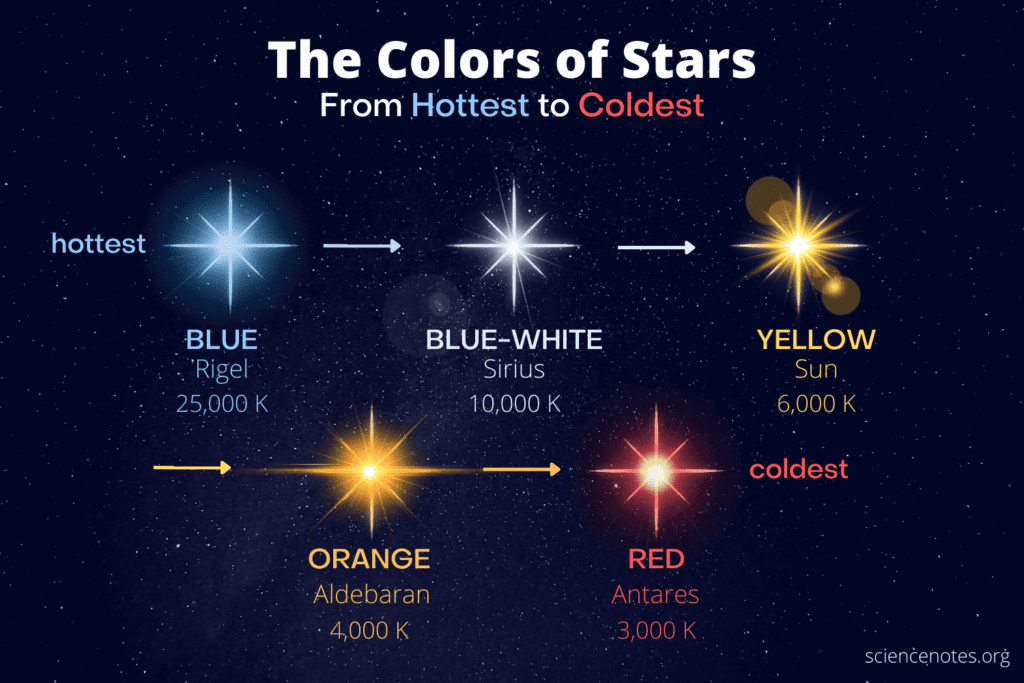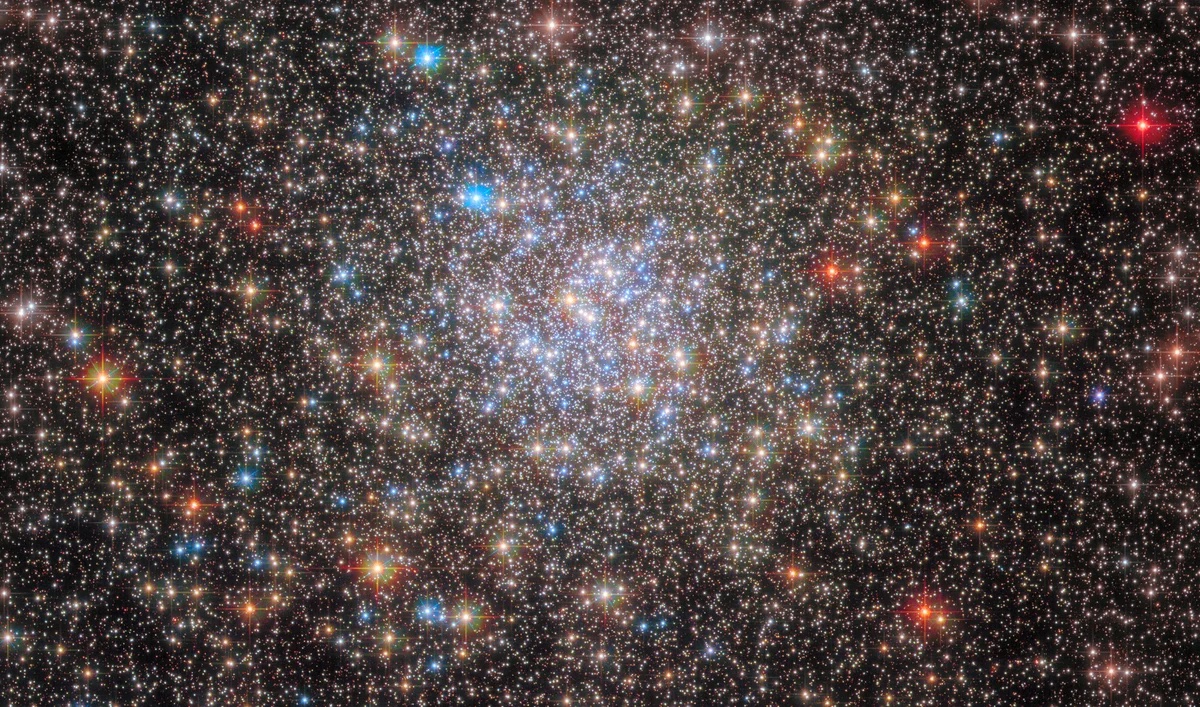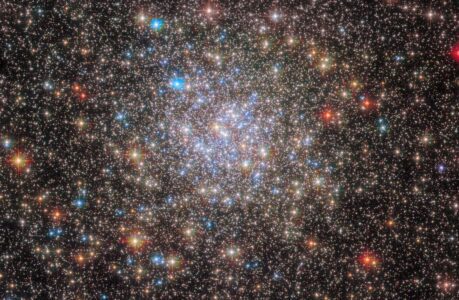Introduction
Starry nights have mesmerized humanity for centuries, with their twinkling gems decorating the celestial canvas. These celestial objects not only differ in brightness and position but also in their captivating colors. From fiery red giants to brilliant blue dwarfs, stars showcase a stunning array of hues that pique our curiosity. In this article, we will embark on an astronomical journey to uncover the intriguing secrets behind the different colors of stars.
The Spectrum of Star Colors
Understanding Stellar Spectra
To comprehend why stars exhibit various colors, we must first explore the concept of stellar spectra. A stellar spectrum is a unique fingerprint of a star’s composition and temperature. By dissecting the light emitted by a star, scientists can discern the underlying factors that determine its color.
- Hot vs. Cold Stars
- The primary determinant of a star’s color is its temperature. Hotter stars appear bluish-white, while cooler stars tend to have reddish or even orange hues. This fundamental relationship between temperature and color is encapsulated in Wien’s Law, which states that the wavelength of peak emission is inversely proportional to a star’s temperature. As a star’s temperature increases, it emits more energy in shorter wavelengths, shifting towards the blue end of the spectrum.
- Learn more about Wien’s Law and its implications here.
- The primary determinant of a star’s color is its temperature. Hotter stars appear bluish-white, while cooler stars tend to have reddish or even orange hues. This fundamental relationship between temperature and color is encapsulated in Wien’s Law, which states that the wavelength of peak emission is inversely proportional to a star’s temperature. As a star’s temperature increases, it emits more energy in shorter wavelengths, shifting towards the blue end of the spectrum.

Main Factors Influencing Star Colors
Several factors play a role in shaping a star’s color, including its mass, age, and chemical composition.
- Mass and Luminosity
- The mass of a star directly impacts its color. Massive stars, known as blue giants, emit bluish-white light due to their high temperatures. In contrast, less massive stars, like red dwarfs, have lower temperatures, resulting in a reddish hue. Additionally, a star’s luminosity, or its intrinsic brightness, can also affect its apparent color. A very bright star may appear whiter than a dimmer star of the same temperature.
- For further insight into the relationship between mass and star color, refer to this source.
- The mass of a star directly impacts its color. Massive stars, known as blue giants, emit bluish-white light due to their high temperatures. In contrast, less massive stars, like red dwarfs, have lower temperatures, resulting in a reddish hue. Additionally, a star’s luminosity, or its intrinsic brightness, can also affect its apparent color. A very bright star may appear whiter than a dimmer star of the same temperature.
- Age and Evolution
- Stars evolve over time, which impacts their color. Young stars often shine blue due to their high temperatures. As they age and their temperature decreases, they transition to a yellow or orange hue. Eventually, some stars become red giants in the late stages of their evolution. The aging process significantly contributes to the diversity of star colors in the night sky.
- Explore the lifecycle of stars and their color evolution in more detail here.
- Stars evolve over time, which impacts their color. Young stars often shine blue due to their high temperatures. As they age and their temperature decreases, they transition to a yellow or orange hue. Eventually, some stars become red giants in the late stages of their evolution. The aging process significantly contributes to the diversity of star colors in the night sky.
- Chemical Composition
- The elements present in a star also influence its color. Different elements absorb and emit specific wavelengths of light, leading to distinct spectral lines in a star’s spectrum. For instance, hydrogen and helium, the two most abundant elements in stars, play significant roles in determining their colors. The presence of metals in a star’s atmosphere can alter its spectrum and, consequently, its color.
- Dive deeper into the impact of chemical composition on star colors here.
- The elements present in a star also influence its color. Different elements absorb and emit specific wavelengths of light, leading to distinct spectral lines in a star’s spectrum. For instance, hydrogen and helium, the two most abundant elements in stars, play significant roles in determining their colors. The presence of metals in a star’s atmosphere can alter its spectrum and, consequently, its color.
Stars in Different Hues

Blue and White Stars
- O and B-type StarsO and B-type stars, often referred to as blue giants, are among the hottest in the universe. With surface temperatures exceeding 25,000 degrees Celsius (45,000 degrees Fahrenheit), they emit intense bluish-white light. These stars are relatively rare but are some of the most luminous objects in the cosmos.
- A-type StarsA-type stars, while not as scorching as O and B-type stars, still radiate a bluish-white glow. Their surface temperatures range from 7,500 to 10,000 degrees Celsius (13,500 to 18,000 degrees Fahrenheit). Stars like Vega, part of the Lyra constellation, are prominent examples of A-type stars
Yellow and Orange Stars
- G-type StarsOur very own Sun belongs to the G-type star category, commonly known as yellow dwarfs. These stars have surface temperatures around 5,500 degrees Celsius (9,932 degrees Fahrenheit) and emit a warm, yellowish light. Their color is a result of the Sun’s composition and temperature.
- K-type StarsK-type stars, often seen with an orange-red appearance, are cooler than G-type stars. They typically have surface temperatures ranging from 3,500 to 5,000 degrees Celsius (6,332 to 9,032 degrees Fahrenheit). Notable K-type stars include Arcturus and Aldebaran.
Red Stars
- M-type StarsThe coolest and most common type of star in the universe, M-type stars, radiate a deep red glow. These stars, also known as red dwarfs, have surface temperatures below 3,500 degrees Celsius (6,332 degrees Fahrenheit). Proxima Centauri, the closest known star to our Solar System, is an M-type star.
- Delve into the world of red dwarf stars and their significance in our galactic neighborhood here.
Beyond Visible Light
While human eyes perceive stars primarily in the visible spectrum, stars emit radiation across a broader range of wavelengths, including ultraviolet (UV) and infrared (IR) light. Understanding these less visible aspects of starlight can provide further insights into the color variations of stars.
Ultraviolet Emission
- Ultraviolet-Absorbing ElementsUltraviolet light, although invisible to the naked eye, plays a crucial role in determining a star’s color. Certain elements present in a star’s atmosphere can absorb UV radiation, influencing its spectral characteristics. For example, the presence of carbon molecules can lead to a UV-absorbing environment, affecting the star’s perceived color.
- Explore the impact of UV-absorbing elements on star colors here.
Infrared Emission
- Infrared ExcessInfrared radiation, on the other hand, can reveal unique insights into a star’s temperature and age. Stars with an “infrared excess” emit more IR radiation than expected based on their visible light output. This phenomenon often indicates the presence of circumstellar dust disks or companions, which can affect a star’s perceived color.
- Learn about the significance of infrared excess in the study of stars here.
The Cosmic Kaleidoscope
Stars, in all their diverse colors, offer a breathtaking display of nature’s grandeur. From the brilliant blue giants to the fiery red dwarfs, each star’s hue tells a story of its composition, temperature, and evolutionary stage. As we gaze up at the night sky, we are privileged witnesses to this celestial kaleidoscope, a testament to the fascinating interplay of physics, chemistry, and astronomy.
In conclusion, the colors of stars are not merely a matter of aesthetic beauty but a key to unlocking the mysteries of the cosmos. By deciphering the language of starlight, scientists continue to deepen our understanding of the universe and our place within it.

